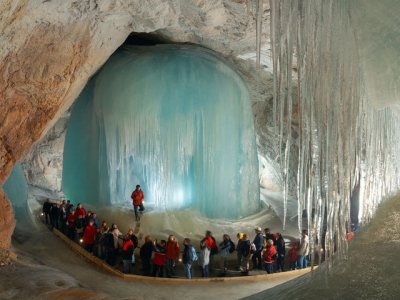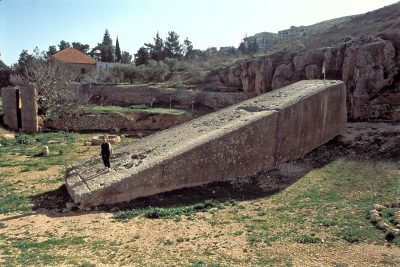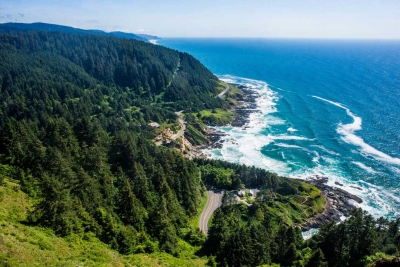
The Eisriesenwelt is one of nature’s jewels. It is located in Werfen, Austria, about 40km south of Salzburg and is accessible by a steep cable car ride.
The Eisriesenwelt is the largest ice cave in the world. Gigantic walls of blue ice greet you as you enter the 42 km-long labyrinth of caves in the mountains of the Tennengebirge. Although the cave extends for over 42 km, only the first kilometre, the area that tourists are allowed to visit, is covered in ice. The rest of the cave is formed of limestone.
Eisriesenwelt was formed by the Salzach River, which eroded passageways into the mountain. The ice formations in the cave were formed by thawing snow which drained into the cave and froze during winter. Since the entrance to the caves is open year-round, chilly winter winds blow into the cave and freeze the snow inside. In summer, a cold wind from inside the cave blows toward the entrance and prevents the formations from melting.
The chilly winds blowing in and out of the cave freeze the water from the melting snow that trickles into the cracks and crevices of the rocks. The result is a crystalline wonderland of natural ice formations. Apart from the frosty stalagmites and stalactites, the shapes resemble a gushing river frozen solid in time. The more you gaze, the more variety of forms you can imagine, such as a waterfall, caste, an icy chapel or an organ! When the guide sets off magnesium flare, the cave gleams with an ethereal glow. Here, the temperature hovers at 0 and lower even in the height of summer. So visitors have to wear warm jackets and gloves.
Before the cave was studied by scientists, locals believed that it was an entrance to Hell and refused to explore it. Though it was first discovered by Anton Pooselt in 1879, expeditions to the cave began only after over 30 years.
Picture Credit : Google



